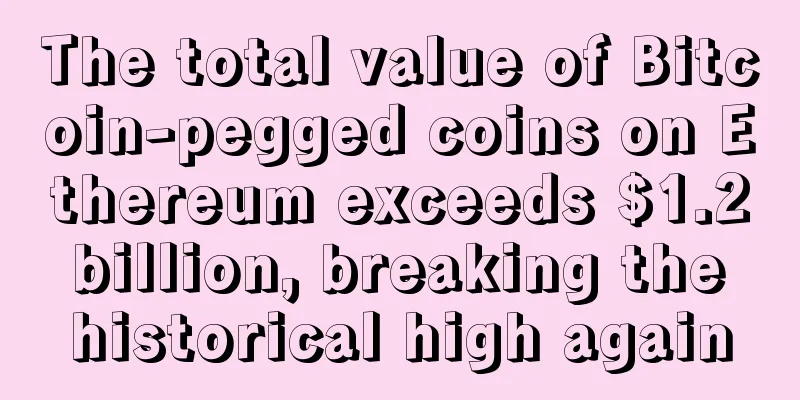The Third Way of DeFi: Understanding Centaur and its Exploration Path in One Article

|
The development and innovation of DeFi are in full swing, but it is still a very niche field. The scale of assets involved is very different from that of traditional finance. The derivatives transactions in the traditional financial market exceed hundreds of trillions of dollars, while in DeFi, the total amount of locked assets has just exceeded 10 billion US dollars, and the overall market value is also fluctuating around 15 billion US dollars, which is not even comparable to a technology giant. Bezos is worth more than 200 billion US dollars, which is more than ten times the current overall market value of DeFi. From this perspective, DeFi is still very small and has a very broad room for growth. In the process of promoting the development of DeFi, at present, most projects focus on building decentralized transactions, lending, derivatives, insurance, oracles, aggregators and other fields. From MakerDAO, Uniswap, Synthetix to Nexus Mutual, Chainlink, and YFI, DeFi practice has achieved initial success. However, in the process of exploration, DeFi has shown deficiencies in scalability, fees, user experience, etc., which has hindered its development to a large population. In addition, DeFi also has some challenges in terms of supervision and compliance. In order to solve these problems, the entire crypto field is making breakthroughs from all angles, from public chain sharding, consensus mechanism iteration, Layer 2, to cross-chain, user interface upgrades, etc. These efforts are showing substantial progress. Among these explorations, there is also an exploration of a third way, which is based on the current status quo, combining centralization and decentralization to accelerate the development of DeFi and promote its adoption among a large number of people. This is what Centaur is trying to accomplish. Centaur's Third WayCentaur provides financial services such as lending, asset management, and digital payments, but from its path, it initially adopted a semi-decentralized model to build these services. On the one hand, it takes advantage of the transparency and security of decentralized infrastructure, and on the other hand, it also takes advantage of the financial service protection layer provided by the centralized system. It is different from CeFi's fully centralized solution and DeFi's solution that is completely based on public chain smart contracts. It takes the third path. Centaur attempts to combine the advantages of centralized and decentralized finance and build a bridge for the two different forms of finance at the current stage. Both centralized finance and decentralized finance have their trade-offs, advantages and disadvantages. Centaur's solution is to combine the advantages of both and discard their disadvantages as much as possible. For example, in centralized finance, financial institutions (such as banks) generally conduct credit assessments on borrowers, determine the loan amount, term, and interest rate, and then make loan operations. If a default occurs, it will be resolved by confiscating the mortgaged assets or other traditional judicial means, such as being included in the list of dishonest debtors. Financial institutions are often third-party institutions. Once a default occurs, the institution needs to bear all the risks. In addition, in the centralized institutional operation model, different institutions have their own customer behavior information. In order to protect privacy, this information is usually not disclosed or shared. This will also cause the problem of multiple debts. In the lending practice in DeFi, since it is impossible to conduct credit assessment of users like traditional financial institutions, lending in DeFi is more likely to adopt an over-collateralized model, which cannot achieve credit lending in traditional finance. For example, if a user wants to borrow DAI, he can use ETH for lending at a 200% collateral rate, which results in inefficient utilization of funds. In the current DeFi lending scenario, a considerable part of the demand comes from users' speculation and trading needs. This application scenario cannot be adopted by a large number of people. Due to DeFi's over-collateralized model, its lending rates are often determined by algorithms or community consensus, which is the same for everyone and transparent. In addition, since it is an over-collateralized model, it can deal with defaults through liquidation. Finally, all lending behaviors are recorded on the blockchain and are also transparent. These are its advantages over traditional financial lending. Of course, there are also certain privacy issues here. The semi-centralized solution is to combine the advantages of both. In the practice of lending, Centaur's model is to form a partnership with traditional institutions on the one hand, and evaluate the credit of borrowers in a centralized way. This part has very mature applications in traditional financial institutions. The borrower's credit score and credit limit are associated with the wallet address, so that the borrower can obtain the corresponding loan according to his credit score without collateral. Unlike traditional financial lending, the funds for the loan come from the liquidity pool on the blockchain, which fully utilizes the advantages of the current lending liquidity pool. Like Compound, the interest rate and repayment conditions are the same for all borrowers. It is determined by the lender group and implemented through algorithms. It can fully utilize the advantages of individuals borrowing from the smart contract liquidity pool, can enter or exit at any time, and can adjust the interest rate in real time according to the supply and demand of lending. This is impossible in traditional peer-to-peer finance. In this semi-centralized model, if a default occurs, Centaur will recover the funds through traditional legal models. If the funds cannot be recovered or are partially recovered, this part of the loss will be evenly distributed among all lenders. This model is already very mature in centralized financial institutions. Both banks and Internet financial institutions have built very mature recovery systems that can control losses within a certain range. There will be different risk level concepts here, and interest rates and risk levels will also be linked, so that risks can be controlled within a controllable range. At the same time, all records of the lending process are not stored in centralized financial institutions, but on the Centaur chain, including the credit records of all lenders and borrowers. These records will eventually form the user's on-chain credit record after a period of time. What does this lending model mean for lenders? It means no need to worry about the risk of running away or the risk of withdrawal. In traditional financial lending platforms, we often hear about thunderstorms, where the platform, as the custodian of the financial management user's funds, runs away with the lender's funds. Since the funds are deposited in decentralized smart contracts, users do not have to worry about the platform controlling the funds. Of course, DeFi protocols have potential smart contract risks, which is a possible risk for the entire industry. From the above examples, we can see that Centaur's solution attempts to integrate the advantages of centralized and decentralized models. By cooperating with traditional institutions, borrowers can obtain corresponding loan quotas through their credit scores accumulated in traditional financial institutions, solving the problem of over-collateralization in decentralized lending models. This opens the way for large-scale adoption of lending. In traditional lending practices, credit scores are built for people, which greatly releases the scale of borrowers and the total amount of borrowing funds. Centaur can not only use the user credit scores of traditional institutions, but also use the mature default recovery system in traditional finance to reduce risks to a controllable range. Centaur also takes advantage of the transparency of the blockchain platform to achieve transparent custody of lender funds, which can prevent the risk of traditional financial institutions running away, which is conducive to increasing the trust of financial management users (lenders). At the same time, the interest rate of its liquidity pool can also be decided by the collective to ensure the consistency of the interests of both parties. In this way, Centaur attempts to open up a third way of open finance by combining centralized finance and decentralized finance. So, how does Centaur build its third path to finance? It has a three-step plan. Centaur Phase 1: InfrastructureOn the third path of building Centaur, the first is the construction of its infrastructure, which includes the development and deployment of smart contracts, testnets, blockchain browsers, wallets, liquidity pool preparation, and more. The Centaur testnet is built on Tendermint Core Consensus. In the first phase, the testnet is mainly used to develop an off-chain data propagation process supported by oracles and nodes. Nodes focus on the consensus and block production of the Centaur chain, and oracles are used to observe transactions in the liquidity pool on Ethereum and reflect their results on the Centaur chain. Blockchain browsers are used to observe data on the Centaur chain. Centaur's interface for interacting with users is mainly completed through its wallet. Centaur plans to build a multi-asset, multi-address and decentralized crypto wallet. The wallet can be used as an entry point to connect users and can be used to participate in Centaur ecosystem products, such as participating in the pledge of liquidity pools, and can also participate in other DeFi products. At this stage, Centaur will divide users into basic users, advanced users, and enterprise users. Basic users can manage assets on multiple chains. These users can use ID, password, and two-factor authentication to log in to their wallets without having to manage their own private keys. Advanced users can access native functions such as staking, smart contract deployment, cross-chain protocol voting, etc. Finally, there is custody services. Some users or institutions are not familiar with the use of encrypted assets and prefer to use custody services. Centaur plans to obtain a custody service license or cooperate with qualified institutions to help these users manage their encrypted assets. In addition to the technical foundation, another important preparation is the construction of Centaur's liquidity pool. Centaur's liquidity pool allows users to pledge crypto assets to obtain future returns. During this period, the funds in the liquidity pool can be used for cross-chain transactions or as collateral for loans. Most of the fees collected will be rewarded to users who participate in the pledge, and users who deposit funds can also obtain voting rights on ecosystem decisions, etc. This is similar to the current DeFi pledge. The main difference of Centaur is that its liquidity pool is built with zero-knowledge proof. Transactions entering and exiting the liquidity pool cannot be linked or tracked, which is conducive to hiding the address balance of participants and providing a certain degree of privacy protection. Its first liquidity pool will be built on Ethereum and use zero-knowledge technology to manage the transfer, deposit and withdrawal of assets. In general, the goals to be achieved in the first phase of Centaur include: users can transfer ETH to Centaur's liquidity pool on Ethereum; the oracle automatically views the transaction and creates a copy of it on the test network; the block producer receives the transaction and adds it to the next block; users can use the block browser or wallet to view the transaction records and data of the Centaur Chain, etc. Phase 2 of Centaur: Centaur Chain The focus of the second phase of Centaur is the construction of its blockchain. The purpose of the Centaur blockchain is not to build a completely different public chain. The current problem is that there are many public chains, many protocols, and they are too fragmented, and there are certain obstacles to the circulation of assets and users. The core of Centaur lies in cross-chain interoperability. However, unlike other cross-chain solutions, it does not focus on forward compatibility of future projects, nor does it require these new projects or protocols to comply with its interoperability framework and development kit. Previous cross-chain solutions often require existing protocols to migrate their structures and users to compatible cross-chain platforms. Centaur proposes the concept of a settlement layer for cross-chain interoperability, which attempts to achieve backward compatibility with current blockchain protocols, allowing users to use DeFi products on multiple chains at the same time. For example, a user pledges his ETH assets on the Ethereum chain and then obtains a DOT loan on the Polkadot chain. Once the user returns the DOT, the ETH collateral will also be released, allowing the user to withdraw. An important reason for achieving this is the use of an oracle network. Centaur uses oracles to feed data to the blockchain in all aspects and accept the data after a round of simplified consensus. Combining this oracle data with smart contracts, transactions and balances can be reflected on the Centaur chain. Users can use these balance proofs to settle on the Centaur chain, and these transactions will be propagated to the local chain. The Centaur chain rewards users for participating in its network. Nodes that validate and produce blocks, or oracles that provide off-chain data, will be rewarded for these contributions. Centaur Phase 3: dAppsThis phase is mainly focused on dApp. After the first and second phases of construction, Centaur has completed the preparation of infrastructure, and the team will focus on the construction of semi-decentralized applications. The initial dApp is mainly to introduce current DeFi projects and build Centaur wallets. Centaur's dApp applications will focus on the following three areas in the early stage, and may be expanded to more DeFi fields in the future. *Crypto asset management services In order to expand the user base, Centaur's target is not only crypto users, but also ordinary investment users. These users have asset management needs and are interested in crypto assets, but are at an early stage in terms of manipulation and cognition. Obtaining index fund services for crypto assets is one of the important needs of this group of people. Centaur uses a combination of centralized and decentralized methods to provide services to these users. It tracks the top 50 projects in the crypto market and uses different indicators such as risk factors, return rate, and fund size to measure fund performance. Advanced users can also build their own funds, and other users can choose to follow the combination of these funds. Users can automatically purchase funds according to their asset preferences and store them in the Centaur wallet, instead of purchasing each crypto token individually from the exchange. Finally, there is also a completely decentralized solution. Users hold the private keys of their own cryptocurrencies and make their own investment portfolios according to the market. The user's transaction records will be recorded on the blockchain. *Remittance Service Centaur Wallet provides cryptocurrency remittance services. If it is a fiat currency remittance, it will be converted into cryptocurrency before the transfer. It can meet the cross-border remittance needs of many users who do not have bank accounts. This is also a service that combines centralization and decentralization. Since cross-border remittances need to meet certain compliance requirements, the entities at the remittance origin and destination (with remittance-related licenses) will first be integrated to enable the sending and receiving of remittances. The deposit and withdrawal of legal currency are also handled by the same entity. At the same time, if the amount of funds exceeds a certain amount, KYC/AML requirements must be met before processing. The decentralized model completely uses blockchain to conduct relevant settlements without trust and transparency. *Unsecured lending platform Unlike the current DeFi over-collateralized lending, Centaur's lending platform adopts a compound model, in which lenders pool funds into a pool from which borrowers can borrow money. Borrowers will initially be limited to small and medium-sized enterprises/multinational corporations/institutions, etc., to reduce the risk of default. The user's credit report will be generated through the records of traditional institutions. As the frequency of users' on-chain lending increases, a credit record on the chain will gradually be formed. The interest rate is automatically adjusted by the community or algorithm based on demand. The Centaur community can exclude people with a credit score below a certain level from participating in lending, and can also blacklist borrowers with a history of default. In addition, Centaur can also work with traditional institutions to resolve disputes related to loan defaults. It utilizes the current centralized infrastructure, for example, the borrower's credit record is provided by existing institutions, and disputes are resolved through legal means in cooperation with traditional institutions. In terms of decentralization, it will record the user's credit behavior and gradually form a credit record on the chain. At the same time, defaults and bad debts will be shared among lenders in proportion. Centaur’s Token EconomyCNTR is the native token of Centaur, with a total of 6 billion and a supply cap. It can be used as a value carrier of the Centaur Chain to support the gas fees of on-chain transactions; at the same time, CNTR is also used to ensure the security of the Centaur network. Nodes producing blocks need to be pledged with CNTR, and CNTR is also used to reward nodes that produce blocks and oracles that provide data. From this perspective, CNTR can capture the cost value of its chain and reduce its circulation by locking it. CNTR also has governance rights. With CNTR, you can vote on various proposals in the Centaur ecosystem. Finally, there is a fee redistribution mechanism in Centaur's token economy. If the protocol or application uses CNTR for payment, 80% of the fees will be allocated to the pledgers, and the rest will be used to supplement operating expenses. If it exceeds the operating expenses, the remaining CNTR will be destroyed. The maximum destruction amount does not exceed 25% of the total supply. If it is not an application or protocol that directly uses CNTR for payment, the captured fees will be used to purchase CNTR regularly. The exploration of the third path of DeFiFrom the perspective of Centaur's vision, it aims to build an open ecosystem that can support existing and future financial solutions. The Centaur chain serves as the backbone of its interoperability, and the Centaur wallet serves as the front-end interface for interaction. On this basis, it combines centralized basic services (such as credit scoring, legal system, etc.) to achieve the adoption of open finance by a larger group of people. This is a unique exploration path. Link to this article: https://www.8btc.com/media/651795 |
<<: Why Polkadot will be the focus in 2021
>>: Filecoin officially announces countdown to mainnet launch
Recommend
Filecoin News: Are you aware of these important developments?
Professionalism and focus, win-win cooperation As...
What moles are bad on the face?
In fact, judging from moles, there are basically ...
Men with prominent cheekbones have better career luck
Men with prominent cheekbones tend to be more con...
What are the ten types of wealthy and noble facial features of men?
Physiognomy is a kind of folk knowledge that pred...
What does a mole on the ear mean?
Ears represent a person's fortune and health....
Explain how to tell fortune from facial features and eyebrows
The appearance of our eyebrows and eyes is closel...
Look at the five elements missing from your fingernails
How can you know what you are missing from your f...
What kind of people will become leftover men and women?
There is a kind of creature that is becoming more...
What are the facial features of a smart woman? What does a girl who is destined to be a young lady look like?
The face contains information about all aspects of...
Behind the record high price of the currency: the Bitcoin network is severely congested, with more than 100,000 transactions unconfirmed during the peak period
On February 22, the transaction queue in the Bitc...
Do you know how your face changes?
Face is very important to us. After all, face is ...
The first Bitcoin "mining machine" dispute case was sentenced, and the reputation dispute between Li Xiaolai and Chen Weixing will also be heard in court soon
Bianews reported that today, the Hangzhou Interne...
What is the fate of people with moles on their necks?
In physiognomy, if the left eyelid twitches, it m...
Analysis: Men's false palm
As the saying goes, a man with a broken palm is w...
The battle between the founders of Bitmain seems to end with Zhan Ketuan taking power
The protracted legal battle between the co-founde...









